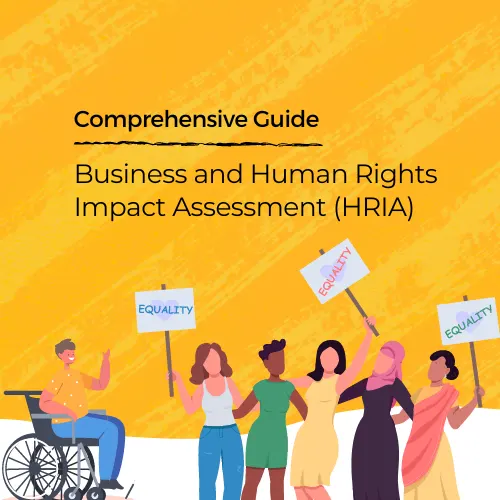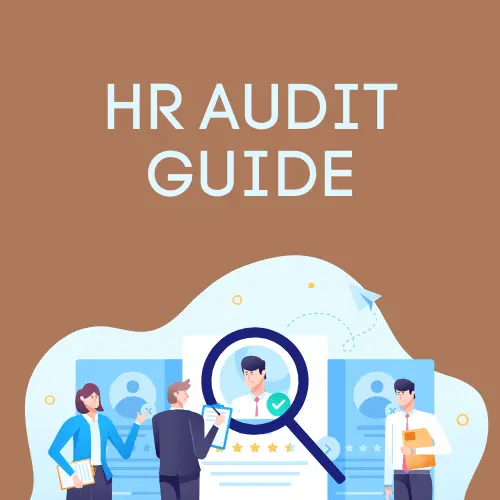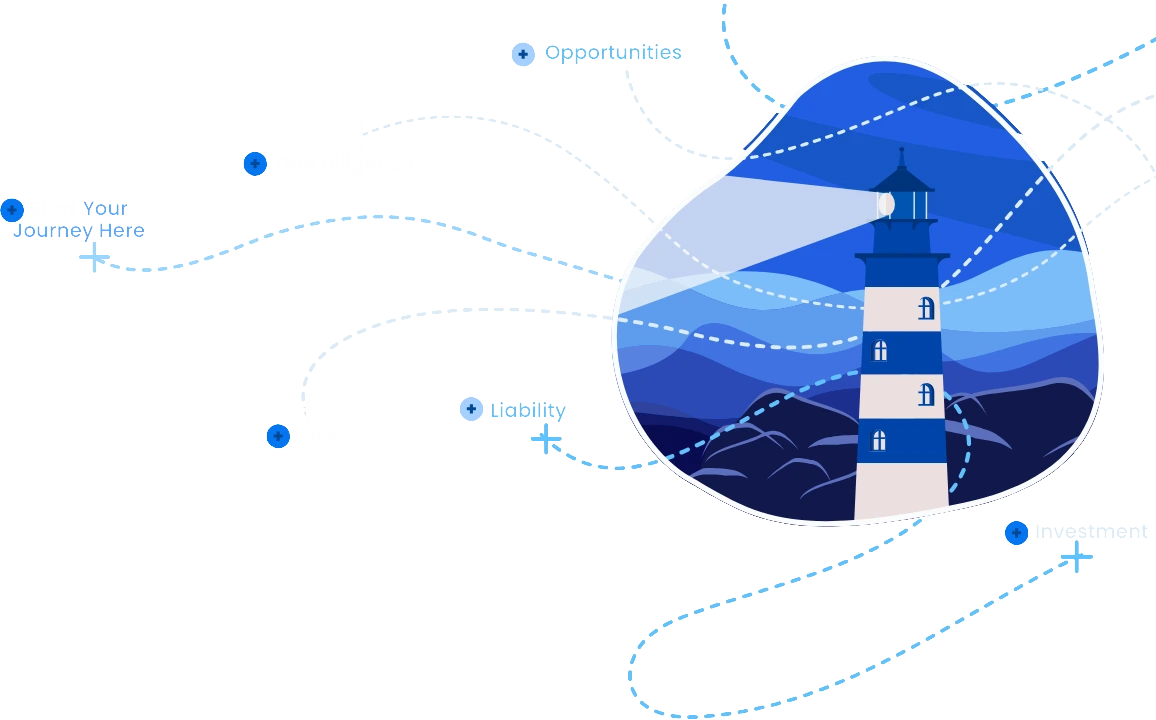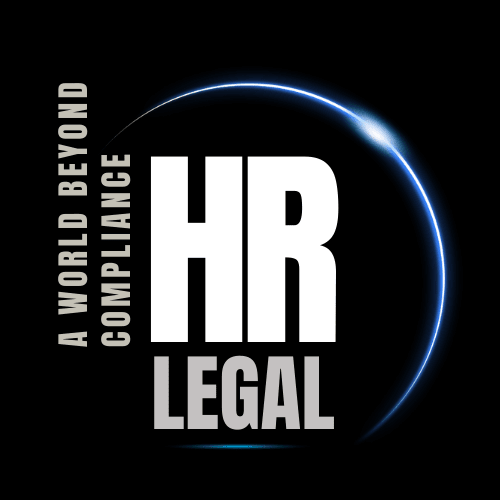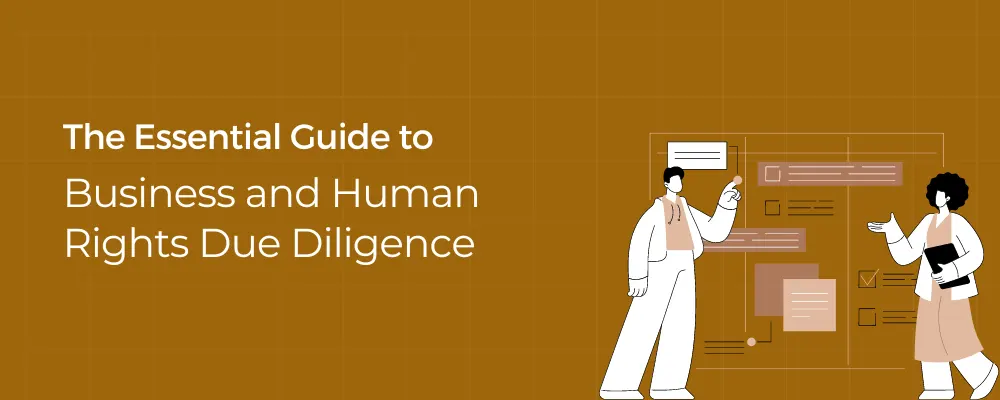
In today’s globalized world, businesses operate across complex supply chains, often spanning continents and cultures. With great economic power comes great responsibility, and ensuring respect for human rights throughout these intricate networks is no longer an afterthought, but a pressing ethical and legal imperative. This is where the concept of Business and Human Rights Due Diligence (HRDD) comes into play.
What is HRDD?
HRDD is a systematic, ongoing process by which businesses identify, prevent, mitigate, and account for their actual and potential adverse human rights impacts throughout their operations and supply chains. It’s essentially a risk management tool that helps businesses understand and address the potential human rights implications of their activities, from their own workplaces to the practices of their suppliers and partners.
Why is HRDD important?
The importance of HRDD goes beyond mere ethics. It offers a range of benefits for businesses, stakeholders, and society as a whole:
- Reduced business risks: Identifying and mitigating human rights risks can prevent reputational damage, legal liabilities, and operational disruptions.
- Increased market access and investor confidence: A proactive approach to HRDD can enhance a company’s attractiveness to ethical investors and consumers while improving access to certain markets.
- Improved working conditions and productivity: Respecting human rights in the workplace fosters a more positive and productive environment for employees, contributing to improved operational efficiency.
- Contribution to sustainable development: HRDD plays a crucial role in achieving the UN Sustainable Development Goals (SDGs), particularly those related to labour rights, equality, and environmental protection.
The UN Guiding Principles and HRDD Framework
The UN Guiding Principles on Business and Human Rights (UNGPs) provide a globally recognized framework for HRDD. These principles, endorsed by the UN Human Rights Council in 2011, lay out three pillars of responsibility:
- State Duty to Protect: Governments have a responsibility to protect human rights from business-related abuses within their jurisdictions.
- Corporate Responsibility to Respect: Businesses have a responsibility to respect human rights throughout their operations and supply chains, even if they lack a direct legal obligation to do so.
- Access to Remedy: People harmed by business-related human rights abuses should have access to effective remedies.
The UNGPs also outline a five-step HRDD framework:
- Identify and assess actual and potential human rights impacts: This involves mapping risks across a business’s operations and supply chains, focusing on areas where it has most leverage.
- Prevention and mitigation: Develop and implement measures to prevent or mitigate identified risks, ensuring alignment with international human rights standards.
- Accounting for impacts: Document and communicate what the company is doing to address human rights impacts, even if they cannot be fully prevented.
- Seek legitimate grievance mechanisms: Establish or participate in effective grievance mechanisms to address concerns raised by stakeholders.
- Ongoing reporting and review: Regularly monitor and review the effectiveness of HRDD processes and update them as needed.
Putting HRDD into Practice
Implementing HRDD is not a one-size-fits-all process. The specific steps and tools will vary depending on the size, sector, and risk profile of a business. However, some key elements include:
- Policy and commitment: Building a strong leadership commitment and embedding human rights principles into corporate policies and strategies.
- Stakeholder engagement: Consulting with affected stakeholders, including employees, communities, and human rights defenders, to identify and address concerns.
- Risk assessment and mapping: Conducting thorough risk assessments to identify and prioritize human rights risks throughout the supply chain.
- Remediation and grievance mechanisms: Establishing accessible and effective grievance mechanisms for dealing with complaints of human rights violations.
- Monitoring and reporting: Regularly monitoring the effectiveness of HRDD processes and transparently reporting progress to stakeholders.
Challenges and Opportunities
While the concept of HRDD is gaining traction, several challenges remain in its implementation:
- Lack of legally binding instruments: Unlike environmental regulations, HRDD frameworks are generally voluntary, leading to inconsistencies in implementation.
- Complexity of supply chains: Mapping and monitoring human rights risks across global supply chains with numerous actors can be challenging and resource-intensive.
- Capacity building: Many businesses, particularly smaller ones, lack the resources and expertise to effectively implement HRDD.
However, despite these challenges, there are also numerous opportunities for businesses to embrace HRDD:
- Technological advancements: Tools and resources for human rights risk mapping and due diligence are rapidly evolving, making it easier for businesses of all sizes to get involved.
- Collaborative initiatives: Multi-stakeholder initiatives bringing together businesses, governments, and NGOs can share best practices and accelerate the adoption of HRDD
- Consumer and investor pressure: Growing consumer and investor demand for ethical and sustainable business practices is creating a strong incentive for companies to adopt HRDD.
The Future of HRDD
The future of HRDD is promising, with increasing awareness, evolving tools, and collaborative efforts paving the way for more widespread and effective implementation. As businesses recognize the potential benefits of HRDD, not just for their bottom line but also for their contribution to a more just and sustainable world, it’s likely to become an integral part of responsible business practices.
Conclusion
Business and Human Rights Due Diligence is not just a legal obligation or a compliance measure. It’s an opportunity for businesses to demonstrate their commitment to ethical practices, build trust with stakeholders, and contribute to a more sustainable future. By embracing HRDD, businesses can mitigate risks, enhance their reputation, and ultimately create a more just and equitable world for everyone.
Additional Resources:
FAQ: Business and Human Rights Due Diligence (HRDD)
What are the Unique Insights on HRDD in India?
While the global movement towards HRDD is gaining momentum, the Indian context presents some unique challenges and opportunities. Here are some insights you might find interesting:
Challenges:
- Lack of a binding legal framework: Unlike the EU, India currently lacks a specific law mandating HRDD for businesses. This creates inconsistencies in implementation and relies on voluntary adoption.
- Informal sector dominance: India’s large informal sector poses challenges in mapping risks and integrating HRDD practices due to its complex and often opaque nature.
- Capacity building needs: Many smaller Indian businesses lack the resources and expertise to effectively implement HRDD, requiring tailored support and capacity-building initiatives.
- Awareness and understanding: Raising awareness about HRDD among both businesses and stakeholders, particularly in smaller towns and rural areas, is crucial to drive widespread adoption.
Opportunities:
- Growing government focus: The Indian government is increasingly focusing on responsible business practices and human rights. Initiatives like the National Action Plan on Business and Human Rights (NAP) show a commitment to creating a conducive environment for HRDD.
- Investor and consumer pressure: Growing awareness among Indian consumers and investors regarding ethical sourcing and sustainability is pushing businesses to consider HRDD as a competitive advantage.
- Domestic initiatives: Local NGOs and business associations are playing a significant role in developing HRDD tools and resources, tailored to the Indian context and relevant sectors.
- Innovation and technology: Indian startups are developing innovative solutions for HRDD implementation, such as AI-powered risk assessment tools and blockchain-based supply chain transparency platforms.
Unique Practices:
- Community-based grievance mechanisms: Traditional Panchayats (village councils) are being explored as potential avenues for grievance redressal in rural areas, adapting to the local social structure.
- Sector-specific initiatives: Several industry associations in India, like the Apparel Export Promotion Council (AEPC), are developing sector-specific HRDD guidelines and tools, providing practical guidance for member businesses.
- Focus on vulnerable groups: Indian HRDD efforts are increasingly focusing on protecting the rights of vulnerable groups, such as migrant workers, tribal communities, and women, who are often disproportionately affected by business activities.
By understanding these unique challenges and opportunities, India can navigate the HRDD landscape effectively and establish itself as a leader in responsible business practices with a strong focus on human rights.
Additional Resources:
What is the Business and Human Rights Checklist?
This checklist is designed to help businesses in India implement HRDD, considering both Indian legal requirements and GRI indicators. It is not exhaustive and should be adapted to the specific context of your business.
Policy and Commitment:
- Element: Develop and implement a company-wide HRDD policy.
- Sub-element: Align policy with UNGPs and Indian NAP on Business and Human Rights.
- How does the policy address key human rights risks relevant to your operations and supply chains in India?
- GRI Indicator: GRI 403-1 Management system for identified labor practices risks and impacts.
Risk Assessment and Mapping:
- Element: Conduct regular risk assessments to identify, prioritize, and map actual and potential human rights impacts.
- Sub-element: Focus on areas with high social vulnerability and labour risks in India (e.g., informal sector, migrant workers).
- Have you consulted stakeholders, including affected communities and NGOs, in the risk assessment process?
- GRI Indicator: GRI 102-15 Stakeholder engagement.
- GRI Indicator: GRI 408-1 Non-discriminatory hiring and employment practices.
Prevention and Mitigation:
- Element: Develop and implement action plans to address identified human rights risks.
- Sub-element: Ensure action plans comply with relevant Indian labour laws and regulations (e.g., Minimum Wages Act, Bonded Labor Abolition Act).
- Are grievance mechanisms included in action plans to address human rights concerns raised by stakeholders?
- GRI Indicator: GRI 406-1 Grievance mechanisms for labor practices.
- GRI Indicator: GRI 409-1 Supplier social assessment.
Monitoring and Review:
- Element: Monitor the effectiveness of HRDD processes and update them as needed.
- Sub-element: Conduct regular audits and due diligence assessments of suppliers and partners, especially in high-risk sectors.
- How do you communicate HRDD progress and challenges to stakeholders?
- GRI Indicator: GRI 102-16 Reporting principles – Stakeholder inclusiveness.
- GRI Indicator: GRI 103-2 Explanation of material topics and their boundaries.
Reporting and Transparency:
- Element: Publicly report on HRDD efforts and progress.
- Sub-element: Align reporting with GRI Standards and Indian NAP disclosure requirements.
- Are reported metrics auditable and transparent?
- GRI Indicator: GRI 102-44 Reporting frequency.
- GRI Indicator: GRI 102-50 Reporting cycle.
Additional Considerations:
- Sector-specific risks: Consider including additional elements and questions specific to your industry or sector in India.
- Community engagement: Actively engage with affected communities and local stakeholders throughout the HRDD process.
- Capacity building: Invest in training and resources to build your knowledge and capabilities in HRDD implementation.
By implementing this checklist and continuously improving your HRDD processes, you can demonstrate your commitment to respecting human rights throughout your operations and supply chains in India.
Disclaimer: This checklist is for informational purposes only and is not intended to be a substitute for legal advice. Please consult with qualified legal professionals to ensure compliance with all applicable laws and regulations.

Let's discuss
Navigating the way to
ESG & Sustainability Due Diligence
Your Risk Mitigation Tool
Supporting Investment – Merger – Acquisition
Share this post
Category: Blog
Tags: People Advisory
Our M&A Due Diligence Services
ESG Due Diligence
Environmental Due Diligence
E&S Due Diligence
EHS Due Diligence
OHS Due Diligence
HR Due Diligence
B&HR Due Diligence
About the author
Director – Sustainable solutions at Consultivo
Madhabi Guha specialises in the domains of ESG, Social Compliance, Business and Human Rights, Development Projects and focuses on supporting go-to-market teams along with customer and partner relationships. Madhabi has been working in the sustainability & business excellence advisory business for over 14 years.
Madhabi has been developing individuals, teams, and organisations in the areas of leadership, excellence and Human Factors in the field of sustainability, people and community.
Related insights
View more in Impact Stories | Blogs | Knowledge Bank | News and Events


